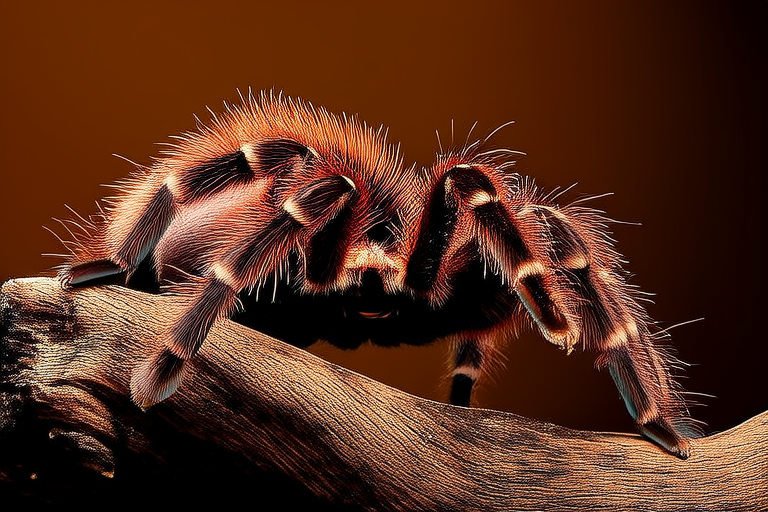The Ultimate Chilean Rose Tarantula Pet Parent Handbook
Welcome to your comprehensive guide to becoming the best pet parent for your Chilean rose tarantula! This handbook covers everything from understanding your tarantula’s basic needs to ensuring their long-term health and happiness.
Introduction to Chilean Rose Tarantulas
The Chilean rose tarantula (Grammostola rosea) is one of the most popular species among tarantula enthusiasts. Native to South America, these spiders are known for their docile nature and striking coloration, which ranges from light brown to dark pink. They are relatively easy to care for, making them ideal for beginners as well as experienced arachnophiles.
Housing Requirements
Terrarium Size and Setup
Your Chilean rose tarantula will require a well-ventilated enclosure that mimics its natural habitat. A 10-gallon tank is suitable for adults, but larger enclosures are preferable for multiple specimens or breeding purposes. The substrate should be at least three inches deep, allowing your spider ample space to burrow comfortably. Suitable substrates include coconut fiber, peat moss, or a mix of both.
Temperature and Humidity Needs
Maintaining the right environmental conditions is crucial for your tarantula’s health. Aim for temperatures between 78°F and 82°F during the day, dropping slightly at night. Use a thermometer placed inside the tank to monitor these levels accurately. Additionally, humidity should range between 60% and 80%. You can achieve this by misting the enclosure regularly or using a humidifier.
Diet Specifics and Feeding Schedule
Chilean rose tarantulas are carnivorous and thrive on a diet of live insects such as crickets, mealworms, and dubia roaches. Feed juveniles every five to seven days, while adults can be fed less frequently, approximately once per week. Always ensure that prey items are no larger than half the width of your tarantula’s abdomen to prevent digestive issues.
Handling and Interaction Guidelines
While Chilean rose tarantulas are generally docile, they may become defensive when threatened or handled improperly. Always handle your tarantula with care, gently coaxing it onto your hand rather than grabbing it abruptly. Avoid frequent handling, as excessive stress can negatively impact their health.
Health Issues and Signs of Distress
Regular observation is key to identifying potential health problems early. Common signs of distress include lethargy, refusal to eat, and changes in behavior. If you notice any concerning symptoms, consult an exotic animal veterinarian specializing in arachnids immediately.
Molting Process Details
Molting is a natural part of a tarantula’s life cycle where they shed their exoskeleton to grow. During this time, your tarantula will likely stop eating and may appear weak. Provide a shallow water dish to help facilitate the process. Once complete, check for any missing appendages and provide additional calcium supplements if necessary.
Breeding Information
Breeding Chilean rose tarantulas requires careful planning and attention to detail. Males reach sexual maturity around two years old, whereas females take longer, typically four to six years. To encourage mating, introduce a male into the female’s enclosure under controlled conditions. After successful copulation, the female will produce eggs within weeks, which she will protect diligently until hatching.
Recommended Accessories for Enrichment
To keep your tarantula mentally stimulated, consider adding enrichment elements like cork bark pieces, branches, or artificial plants. These items provide hiding spots and climbing opportunities, enriching their environment and promoting natural behaviors.
Safety Tips for Owners and Households
Ensure all household members understand how to interact safely with your pet. Store cleaning supplies securely out of reach, and supervise children closely when they’re near the enclosure. Regularly clean the terrarium to maintain hygiene standards.
Resources for Further Learning
Stay informed about advancements in tarantula care through reputable books, journals, and community forums. Join local or online groups dedicated to exotic pets to share experiences and learn from fellow enthusiasts.
